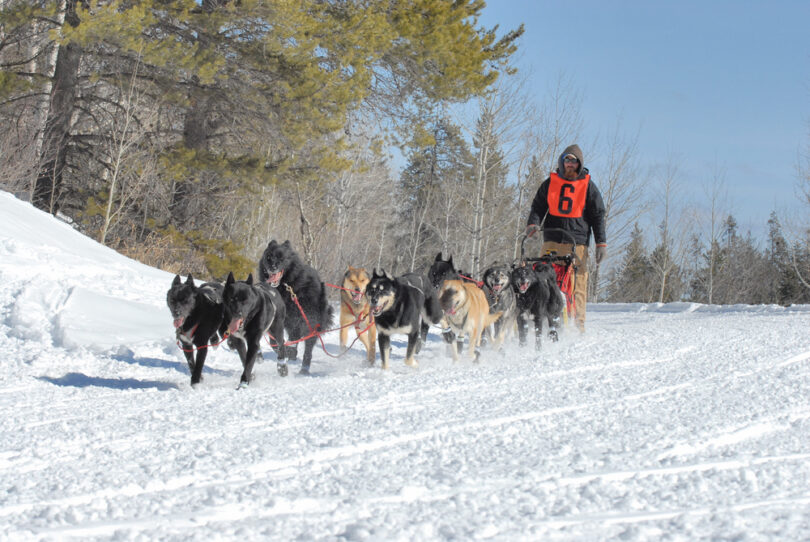Imagine standing amidst Alaska’s vast, snow-covered landscapes in early March, the air buzzing with anticipation for the Iditarod, the world-renowned dog sled race. This event is a journey into the heart of winter’s majesty and a celebration of the resilience of humans and canines alike. The Iditarod transforms Alaska into a vibrant hub for adventurers and enthusiasts, showcasing the unyielding spirit of its participants against a backdrop of breathtaking wilderness.
The Iditarod is deeply rooted in the culture and history of Alaska. The race commemorates a critical moment in 1925, known as the “Great Race of Mercy,” when sled dogs delivered diphtheria serum across treacherous icy terrains to save Nome from an epidemic. This event highlighted the indispensable role of sled dogs in Alaskan history, where they were once the primary mode of transportation and communication in a landscape inaccessible by roads. The Iditarod also celebrates the resilience and enduring spirit of the Alaskan people, who have thrived in harmony with nature’s extreme conditions.
Visiting Alaska during the month of March highlights the beauty of the area but also the challenges it faces during the winter. Alaska beckons those who are eager to embrace adventure and witness the incredible bond between mushers and their sled dogs, offering an experience filled with endurance, teamwork, and the will to overcome nature’s challenges.

Planning Your Trip
When you’re planning to attend the Iditarod, early booking for flights and accommodations is crucial due to high demand. Consider package deals from travel providers, often including flights, hotels, and local tours, providing better value and distinctive experiences like exclusive viewing areas or meetings with mushers. Prepare for Alaska’s weather and remote event locations by packing suitable cold weather gear — including thermal underwear — and planning transportation between different race locations like Anchorage and Nome.
Also, do some research on the amenities available at different race viewing points, and plan for remote areas with limited facilities by carrying essentials like snacks, water, and a first aid kit. Safety in the remote Alaskan environment requires awareness of wildlife, staying on designated paths, and keeping a safe distance from the race course. Familiarize yourself with emergency services along the route and stay connected through mobile phones or satellite devices. Being prepared for Alaska’s conditions ensures a safe and enjoyable Iditarod experience.
Choosing Your Base
Selecting your base of operations for the Iditarod adventure significantly shapes your experience, with each location offering distinct perspectives. Anchorage, the ceremonial start, provides convenience and comfort with a vibrant atmosphere and ample amenities, suitable for first-time Alaska visitors. Willow, where the official race starts, is about an hour north of Anchorage, and offers an intimate view of the mushers and their teams. Nome, at the finish line, delivers a celebratory and intense environment, showcasing the perseverance and triumph of participants, though requiring a longer stay due to the race duration. Each location, from the bustling excitement of Anchorage to the dramatic finish in Nome, offers a different vantage point, tailoring your Iditarod story to your preferences.

Anchorage, Alaska
Engaging in Local Activities
Engaging in local festivities like the Mushers Banquet immerses you deeper into the Iditarod’s culture and spirit. This vibrant event brings together mushers, enthusiasts, and visitors, featuring entertainment, storytelling, and the chance to meet mushers and learn their stories. Advance ticket purchases are recommended for this popular event. The ball offers a taste of local cuisine and showcases the community’s warmth and hospitality. Additionally, you’ll find cultural exhibitions, sled dog demonstrations, and community markets during the Iditarod season.
Year-Round Dog Sled Tours
Let’s say you want to get a little sledding in yourself. Year-round dog sled tours provide an insightful look into the lives of mushers and sled dogs, revealing the training and dedication needed for events like the Iditarod. These tours vary in nature and duration, from short experiences to extensive excursions into the mushing lifestyle. They allow visitors to experience Alaska’s landscapes led by enthusiastic sled dogs.
Choosing ethical tour operators who prioritize animal welfare and sustainable tourism is essential. Tours often include educational components about sled dogs’ training, dog sledding history, and navigating Alaska’s terrain. Some offer hands-on experiences like learning to harness and care for the dogs, deepening your appreciation for the bond between musher and dog, and connecting you with a quintessential Alaskan tradition.

FAQs:
Q: What is the best way to travel within Alaska during the Iditarod?
A: The most common mode of travel within Alaska is by plane, especially to remote areas like Nome. For travel within cities like Anchorage, rental cars, taxis, or ride-sharing services are available. Additionally, Alaska’s railroad offers scenic travel options between some key locations.
Q: Are there guided tours specifically for Iditarod spectators?
A: Yes, there are guided tours designed for Iditarod spectators that include transportation, accommodation, and sometimes exclusive access to certain events or locations. These tours are a great way to experience the race with the guidance of knowledgeable locals.
Q: Can visitors interact with the sled dogs?
A: Interaction with sled dogs is possible during specific events and dog sled tours. However, during the race, it’s important to maintain a safe distance and not disturb the dogs, who are focused on their task.
Q: What are some essential items to pack for the Iditarod?
A: Essential items include thermal clothing, waterproof outerwear, insulated boots, gloves, hats, sunglasses, sunscreen, a camera, portable chargers, and any necessary personal medications. Also, consider bringing snacks and water bottles for remote viewing areas.
Q: Is there cell phone coverage along the Iditarod trail?
A: Cell phone coverage varies along the Iditarod trail. Major towns like Anchorage and Nome have reliable coverage, but remote areas may have limited or no service. It’s advisable to check with your service provider and consider alternative communication means for remote locations.
Q: Are there any health precautions to consider when visiting Alaska for the Iditarod?
A: Visitors should be prepared for cold weather and potential exposure to the elements. Dressing appropriately to avoid hypothermia and frostbite is crucial. Also, staying hydrated and recognizing signs of altitude sickness, if traveling to higher elevations, is important.
Have you ever been to Alaska to watch the Iditarod? Tell us about it in the comments below!








